Abdelwahab Meddeb: The Malady of Islam (8)
The Malady of Islam
by Abdelwahab Meddeb
translated from the French by
Pierre Joris and Charlotte Mandell
(8th installment)
P A R T II
A Genealogy of Fundamentalism
17
In 750 the Abbasids unseated the Umayyads by trying to charge the function of the caliph with sacred character through the spiritual legitimacy conferred by belonging to the “people of the house.” This lineage had been forged by a descent which the new pretenders to power claimed emanated from the loins of Abbas, the prophet’s uncle, whence their name. After less than two centuries of glory, the Caliphate had been emptied of its substance by the middle of the tenth century, the era of that institution’s decline which saw the extension of the caliphal function to three figures. Besides the Caliph of Baghdad, two others declared themselves Caliphs, namely the Fatimid Mahdi of Cairo, and after him, the Umayyad emir of Cordoba. The caliphal function, eroded by this competition, had become symbolic with time; it had nearly breathed its last at the moment of the Mongol invasion, the fire of Baghdad and the assassination of the last Caliph to reside in the Mesopotamian capital (1258).
Baybars (1223-1277), the fifth Mameluk sultan of Egypt (of Turkish descent) was said to have “saved Islam” by kicking out the Crusaders and by stopping the Mongol invasion. [1] The sultan had a stroke of genius: he took in an offspring of the Abbasid family after the destruction of Baghdad (1258) to set this Abbasid up in Cairo and returned the title of caliph to him. This gesture helped Baybars integrate the holy cities of the Hijaz (Mecca and Medina) into the domains he ruled, and from Cairo he now could hold out the bright prospect of an Islamic Empire. Until 1517 the Caliph played for the Mameluks the role of the pontiff who gave religious legitimacy to their secular and military power, in turn controlled in its theological-juridical function by a third institution, the one comprising the corps of ulemas.
This era of exceptional greatness – the current state of Cairo bears witness to the splendor and architectural monumentalism of the Mameluks – was founded on a power structure in which the function of the sacred, the politico-military and the theologico-judicial functions were in actual fact separate, the whole structure being placed under the authority of the prince. The latter, the bearer of sovereignty, attracted to his person the current of sanctity, which fell on him doubly. Any human who attained the supreme function bore the mark of divine selection; on the other hand, the prince who watched over the application of justice represented the shadow of God on earth.
The last radiance of Islamic civilization over Arab lands took place under the Mameluk dynasty, with the domination on the one hand of the separation of the temporal from the spiritual and the redistribution, and of the sacred over the secular arm on the other. This was the epoch when Cairo had become the last world-capital that Islam was to know. Ibn Khaldun (1332-1406), who arrived there at the very end of the year 1382, could not hide how dazzled he was. [2] Faced with Cairo the great historian became truly enthusiastic. Up until then, Khaldun had been rather reserved in his reactions, sober in his expression, but now, describing the universal capital, he was on the verge of lyrical exuberance:
Cairo: metropolis of the world, garden of the universe, place of assembly of the nations, human anthill, high place of Islam, seat of power. Palaces without number rise everywhere, and everywhere flower madrasas and khanaqat where scholars shine like brilliant stars. The city spreads out along the shores of the Nile – the river of Paradise, the receptacle of the waters of heaven, whose floods quench the thirst of men, and give them riches in abundance. I have walked through its streets: a press of crowds, and markets overflowing with all kinds of goods. How often have I heard the praises of this capital, which has attained the truest degree of civilization and prosperity? Concerning her I have gathered a wide variety of impressions, some from my masters, some from friends and others from pilgrims or merchants. Here, to start with, is the impression of my friend al-Maqari – the grand Qadi of Fez and the greatest scholar of the Maghreb – which he shared with me upon his return from the pilgrimage in the year 740 (1339): He who has not seen Cairo will never be able to judge the power and the glory of Islam.[4]
The caliphal function will be revived again in 1517 for the benefit of the Ottoman sultan, but in an exclusively symbolic manner, precisely in order to signify that the religious function comes to adhere as a supplement to the figure of the sultan, whose primary function is imperial. Philip Mansel reminds us of this when he does not accept Fernand Braudel’s description of the Ottoman State as a counter-Europe. The concept of empire, which enlightened the politics of the sultans, was the very concept that had been active in Western history:
From 1453 Mehmed II, like his successors, also saw himself as heir to the Roman Empire and the only true emperor in Europe. […] The Turkish metaphor for worldly dominion was the Red Apple. Before 1453 the Red Apple was believed to be the globe held in the right hand of a giant statue of the Emperor Justinian in front of Haghia Sophia. After the statue’s destruction in 1453, the apple moved West and came to symbolize the Ottomans’ next goal: the city of Rome. […]
The Ottomans were also inspired by a desire to equal the glory of Alexander the Great. […] One of the favourite epithets, both of the sultans and their city, soon became alem penah, ‘refuge of the world. It appeared appropriate to create a multinational capital for an empire which, it was later calculated, contained seventy-two and a half nationalities [Gypsies were considered half a nationality].[5]
The subjects of this empire were aware that the political structure allowed them to live a double identity; this imperial attribute constitutes an astonishing foretaste of the usage current today in the United States and whose effects I have previously discussed.
The caliphal dignity came as an addition to the sultan’s imperial identification: a happy supplement that adds glory to majesty. Its adoption enriches the symbolic field of the empire, strengthened as much by the Western reminiscence as by the oriental inheritance. The imperial idea thus gave itself a wider universality. While after 1517, the caliphal function further sanctified the person of the sultan, the prophet’s remains that arrived the same year from Cairo and Mecca, constituted the visible elements of that sanctification. These relics included
The Prophet’s cloak, seal and swords, one of his teeth, and the hairs from his beard. His banner, of black wool, arrived from Damascus in 1593. These relics were not exposed in a mosque for public reverence but, like the Holy Shroud of Turin, remained secluded in the ruler’s palace, as a private dynastic treasure… […] The special Pavilion of the Holy Mantle, faced with marble panels taken from Cairo, was built for them in the third court of the imperial palace near the Sultan’s bedroom. [6]
As mentioned, the caliphate was to remain one of the Ottoman sultans’ attributes until the abolition of the sultanate by the Turkish republic in 1924. Let us note, however, how this concept is exceeded everywhere when one approaches it in its actual historical manifestation, and not as a myth used as a symbolizing tool by those who are haunted by a culture of the proper, of the specific, the very ones who preach an imaginary purity. That utopia is the one which Osama bin Laden and his minions cry over, agreeing in chorus that for them the beginning of Islam’s misery lies in the abolition of the caliphate. But we have just seen how, among the Ottomans, this caliphate constituted nothing but one additional authority interested to overdetermine the sanctification of the universal and already holy figure of the emperor.
[1] Baybars was of the first Mameluk dynasty, whose sultans were of Turkish origin; this first dynasty produced twenty-five sultans between 1250 and 1382.
[2] The reader who has not visited Cairo can get a sense of this splendor by consulting two works, precious for their illustrations as well as for the texts that accompany and explain them: Jean-Claude Garcin, Le Caire, (Paris, Mazenod & Citadelle,, 2000), cf especially the text on pages147-275, & the illustrations on pages 166-312; and Henri and Anne Stierlin, L’Egypte des Mille et Une Nuits, (Paris, Imprimerie Nationale, 1996) – to be consulted for its photographic documents framing sublime details of Mameluk architecture.
[3] At that time, Cairo was under the reign of al-Zahir Barquq, the first Mameluk sultan of Circassian origin. This second Mameluk dynasty produced twenty-four sultans.
[4] Ibn Khaldun, Le Voyage d’Occident et d’Orient, translated from Arabic (into French) by Abdessalam Cheddadi (Paris, Sindbad, 1980) p. 148-149. The admiration generated by Cairo signals that this city was far more important than any of the Western cities Ibn Khaldun had frequented (Tunis, Bejaïa, Tlemcen, Fez, Grenada, Seville).
[5] Philip Mansel, Constantinople: City of the world’s desire, 1453-1924 (New York, St. Martin’s Press, 1996), 6-7.
[6] Ibid. 42.
18
If we turn back to the thirteenth century, it would be useful to examine the standpoint of a foreigner, the Emperor Frederick II (1194-1250), who was in contact with the Islamic power structure. He had negotiated in Arabic with his Muslim interlocutors, after having spent time in the Holy Land during the peaceful sixth crusade he had initiated in 1229. Before leaving the shores of Italy, the emperor was still engaged in the process that he had set in motion at the very beginning of his reign: to restore and reinforce the imperial structure. Because of this, the conflict with the papacy remained open, the positions of the two parties were irreconcilable, whether the adversary was Innocent III or Gregory IX. Furthermore, Frederick was in Palestine on his own authority, without having consulted the papacy. How could he have done so, given that he had been excommunicated? The problem that confronted the emperor was the same one that confronted the Muslim princes: what are the relations between temporal power and spiritual power, and what place should be accorded to religion and sacred symbols in the power structure as well as to the persons that incarnate it?
It was al-Kamil (d. 1238), the Ayyubid sultan of Egypt, son of the famous Saladin, who encouraged Frederick II to come to the Orient, because of a foreboding that his brother Al-Ashraf, who reigned in Damascus, was plotting against him. Frederick himself sought to take advantage of this intra-Islamic dissension. When Frederick landed on the coast, al-Kamil was encamped in Nabluz with a formidable army. Once Frederick had disembarked, the sultan sent the emir Fakhr ed-Din as an envoy to him. The two became friends and spent much time discussing philosophy and the art of governing. Let me remind the reader that Frederick was a highly cultured man, educated in the Arab tradition; he shared the same concepts and references as his interlocutor. The discussions must have been fruitful and the emir no doubt would have reported them to his monarch al-Kamil, himself a scholar and poet who loved to exchange ideas with the scholars of his city.
The Orient had different connotations for these two great men. Unstinted admiration of the Arab mind was the weightiest factor with the Hohenstaufen Emperor. For Frederick II lived in a day when the East was the source of all European knowledge and science, as Italy and Roman culture were to the barbarian North, as of old the art and philosophy of Hellas were to Italy. The spirit of the medieval church was imprisoned in formula and dogma, the fetters could be loosened only by oriental Hellenistic knowledge, chiefly knowledge of the laws of Nature. Frederick was more determined than any contemporary to unlock these stores of knowledge, and he was destined to be, in virtue of his mental receptiveness and his Sicilian birth, the great intermediary and reconciler of East and West.[3]
After many mishaps and much temporizing, Frederick II, much appreciated by the Muslim negotiators, signed an advantageous treaty on February 18 1229. It stipulated that the Emperor extended his sovereignty over Jerusalem, except for the sacred enclaves that surrounded the Dome of the Rock and faced the al-Aqsa mosque. Bethlehem was also ceded, with the proviso that Islamic believers would have access to it in order to offer their prayers. This retrocession provoked the anger of the Muslims. Many recalled that Saladin had told Richard the Lion-Hearted how this city was as sacred to the Muslims as it was to the Christians, “and even more so, for that is where one night the Prophet ascended to Heaven, and where the angels assemble.”
So Frederick did not even maintain the pretence of a war for the faith: his Crusade was purely an affair of state, a matter concerning the Empire, not the church, and this could not have been made clearer than by the existence of his Muslim retinue. It was perfectly natural for Frederick, from the political point of view, to pose as an Oriental here in Syria.[4]
In his conversations with Fakhr ed-Din, Frederick brought up many questions regarding the state. They discussed the figure of the Caliph and the ineffectiveness of his political clout — Frederick had negotiated with political and military leaders and had obtained the kingship of Jerusalem. If the Caliph had added his voice to those of the protestors, his dissent had no effect. Frederick was fascinated by the fact that the Muslins had managed to neutralize their “pope:” he himself was forced to deal with the competition of his own pope, who had set himself up as versus imperator. Furthermore, Muslim sultans did not have to submit to excommunication, as he had to. Having also learned that the caliph was descended from the Prophet through his uncle Abbas and that the power had remained in the family, he said:
“That is excellent,” said Frederick, “ far superior to the arrangement of those fools, the Christians. They choose as their spiritual head any fellow they will, without the smallest relationship to the Messiah, and they make him the Messiah’s representative. That pope there has no title to such a position, whereas your Khalif is the descendant of Muhammad’s uncle.”[5]
It was as if Frederick had realized that Islam had in fact managed to resolve the problem of the relationship between the two powers, the temporal and the spiritual. By concluding that the role of the Caliph, descendant of the Prophet, was limited to the spiritual function, he is in agreement with what we have learned from the encounter in Mecca of the Imam Zayn al-Abidin and the Umayyad Hisham. It is as if the virtual we discern in this tale from the beginning of the eighth century had become the reality of the thirteenth century. Before his own eyes Frederick saw the realization of his idea: the subjugation of the spiritual to the temporal order. And the way in which thirty years later Baybars will exploit the figure of the Caliph for the sanctification of his own temporal glory is a consequence of that same reality.
Frederick, the excommunicated emperor, in the end staged his self-coronation at the Holy Sepulcher, placing on his head the holy crown of Jerusalem. This event had as its actor an excommunicated prince and as its stage the most sacred site in Christendom, but no intermediation by the Church, no bishop, no coronation mass. The ceremony took place Sunday March 18 1229, and on that day Frederick restored the principle of a kingship that connects directly with god without mediation by the Church.
Frederick II brought western “monarchy” back from the Orient. The Hohenstauffen descendant will waver between the model of the old Christian empire (where the emperor incarnates the double glory of majesty and of holiness) and the new format introduced by secular monarchy. Through this ambivalence the emperor cut the domain of the immaterial in two: he left matters of the soul to the Church and assigned matters of the mind to the State. The ecclesiastical hierarchy of grace was given as its counterpart the secular and intellectual hierarchy of law. On this point he must have profited from his conversations with Fakhr ed-Din: indeed, he did try to adapt the theologico-judicial institution of the ulemas to his own culture, and founded the University of Naples to attract juridical scholars, “twins” of the ulemas.[6]
It goes without saying that Frederick’s authorities where not exclusively Eastern. He also cited such figures as Justinian, the emperor of the legal code, and Augustus, the emperor of peace. Here I just wanted to recall the astonishing likeness to Islamic structures of power founded on a tripartite division distinguishing three concepts: nature, mind, and soul. Through the first, sovereignty is invested in the monarch. Under the authority of the state, the second gives intellectual power to the ulemas, or the juridical scholars. The last is conceded to the caliph-imam (or to the pope). We are very close to what Baybars accomplished around 1260 in Cairo.
But Frederick’s imperial experience gains its autonomy and Christian specificity in the tension between two legitimate cults of divinity: the law and the mystery of the sacraments. Such a philosophy of the State and of Justice expresses all the violence that will bloody the relationship between the Church and the State, both in direct contact with God. Dante will be the eloquent ponderer of that tension in his De Monarchia as in all of his works. According to the Florentine poet, while the contemplative life can be saved by the Church, the active life can realize itself concretely only under the reign of the law and of a sanctified State.[7]
[1] Throughout this development I am drawing on the excellent monograph by Ernst Kantorowicz, Frederick the Second, 1194-1250, translated by E. O. Lorimer, (New York, Unger, 1957.)
[2] The dynasty of the Ayyubids, founded by Saladin, reigned over Egypt (to which it added Syria) from 1171 to 1249.
[3] E. Kantorowicz, Frederick the Second, 192.
[4] Ibid. 191.
[5] Ibid. 192-193.
[6] Ibid., 237.
[7] ibid. p. 247.
[to be continued]
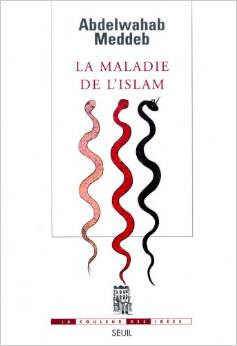
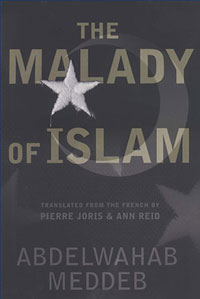

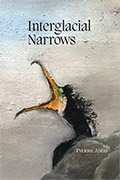 “Interglacial Narrows (Poems 1915-2021)” Contra Mundum Press
“Interglacial Narrows (Poems 1915-2021)” Contra Mundum Press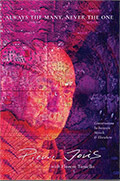 “Always the Many, Never the One: Conversations In-between, with Florent Toniello” Contra Mundum Press
“Always the Many, Never the One: Conversations In-between, with Florent Toniello” Contra Mundum Press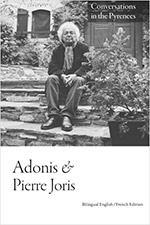 “Conversations in the Pyrenees”
“Conversations in the Pyrenees”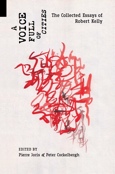 “A Voice Full of Cities: The Collected Essays of Robert Kelly.” Edited by Pierre Joris & Peter Cockelbergh
“A Voice Full of Cities: The Collected Essays of Robert Kelly.” Edited by Pierre Joris & Peter Cockelbergh “An American Suite” (Poems) —Inpatient Press
“An American Suite” (Poems) —Inpatient Press “Arabia (not so) Deserta” : Essays on Maghrebi & Mashreqi Writing & Culture
“Arabia (not so) Deserta” : Essays on Maghrebi & Mashreqi Writing & Culture “Barzakh” (Poems 2000-2012)
“Barzakh” (Poems 2000-2012) “Fox-trails, -tales & -trots”
“Fox-trails, -tales & -trots”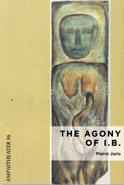 “The Agony of I.B.” — A play. Editions PHI & TNL 2016
“The Agony of I.B.” — A play. Editions PHI & TNL 2016 “The Book of U / Le livre des cormorans”
“The Book of U / Le livre des cormorans”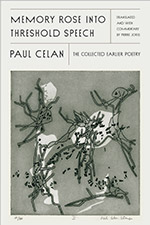 “Memory Rose Into Threshold Speech: The Collected Earlier Poetry of Paul Celan”
“Memory Rose Into Threshold Speech: The Collected Earlier Poetry of Paul Celan”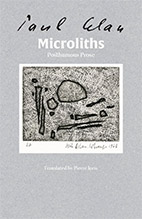 “Paul Celan, Microliths They Are, Little Stones”
“Paul Celan, Microliths They Are, Little Stones”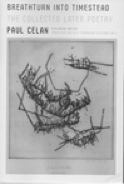 “Paul Celan: Breathturn into Timestead-The Collected Later Poetry.” Translated & with commentary by Pierre Joris. Farrar, Straus & Giroux
“Paul Celan: Breathturn into Timestead-The Collected Later Poetry.” Translated & with commentary by Pierre Joris. Farrar, Straus & Giroux